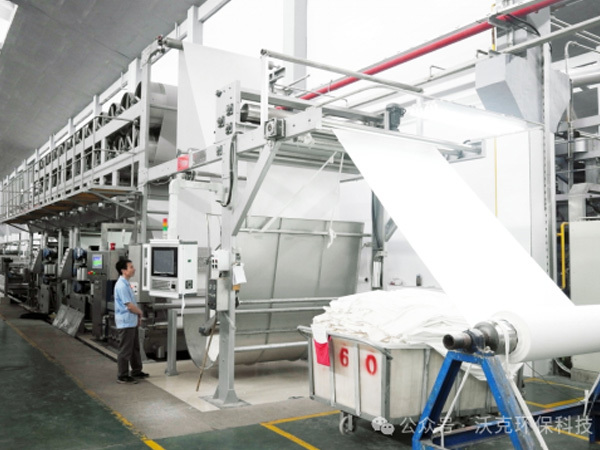Case study of MBR treatment of dyeing wastewater
Project Overview: A dyeing enterprise in Jiaozuo City occupies nearly 20,000 square meters, with a total investment of 100 million yuan and an annual production capacity of 30 million meters. The main wastewater sources are desizing, scouring, bleaching, mercerizing, and washing, with a wastewater generation of 2,000 cubic meters per day. Process Design: The pollutants in the dyeing wastewater are mainly organic matter, with a low BOD/COD ratio, making it difficult to biodegrade. The influent COD concentration is 830 mg/L, BOD concentration is 140 mg/L, and SS concentration is 201 mg/L. The effluent meets the discharge standards of GB 4287-2012, "Discharge Standards for Water Pollutants from Textile Dyeing and Finishing Industry." The wastewater treatment process is as follows: After pretreatment, the wastewater enters the hydrolysis acidification tank and then the GMBR aerobic bio-system. The project uses 14 sets of GM480-3454 membrane modules with a total area of 6700 square meters. It is set up in two series, with 7 sets per series, and a membrane flux of 0.29 cubic meters per square meter per day. Due to its ultra-high sludge concentration and rich microbial community, the MBR process greatly improves the average removal rate of COD, BOD5, chroma, and turbidity, achieving effluent water quality indicators of 20 mg/L, 1.6 mg/L, 25 times, and 0.51 NTU respectively. The effluent water quality is better than the direct discharge standard of GB4287-2012, "Discharge Standards for Water Pollutants from Textile Dyeing and Finishing Industry."
The wastewater treatment plant occupies an area of approximately 2500 square meters, equivalent to 0.8 square meters per ton of water. Compared with traditional dyeing wastewater treatment facilities, it saves approximately 30% of land area by eliminating the secondary sedimentation tank and subsequent coagulation sedimentation tank. However, due to the use of membrane modules, ozone generators, closed contact reaction tanks, and higher requirements for construction and installation processes, the construction cost is approximately 35% higher than that of traditional treatment processes.
Advantages of GMBR Technology
Highly Efficient Removal of Organic Matter: The membrane module forcefully mechanically retains the biological sludge, greatly increasing the microbial concentration, enriching the microbial species, and fully degrading organic matter to achieve high-concentration organic wastewater treatment.
Effective Removal of Pigments and Suspended Solids: Pigments and suspended solids in dyeing wastewater are often difficult to degrade and remove. However, the GMBR process can effectively remove fine particles and pigment molecules through membrane filtration.
Good Effluent Quality: The effluent quality after treatment by the GMBR process is stable and meets the discharge standards, allowing for direct reuse or further deep treatment.
Small Footprint: Compared with the traditional activated sludge method, the GMBR process does not require a sedimentation tank.






